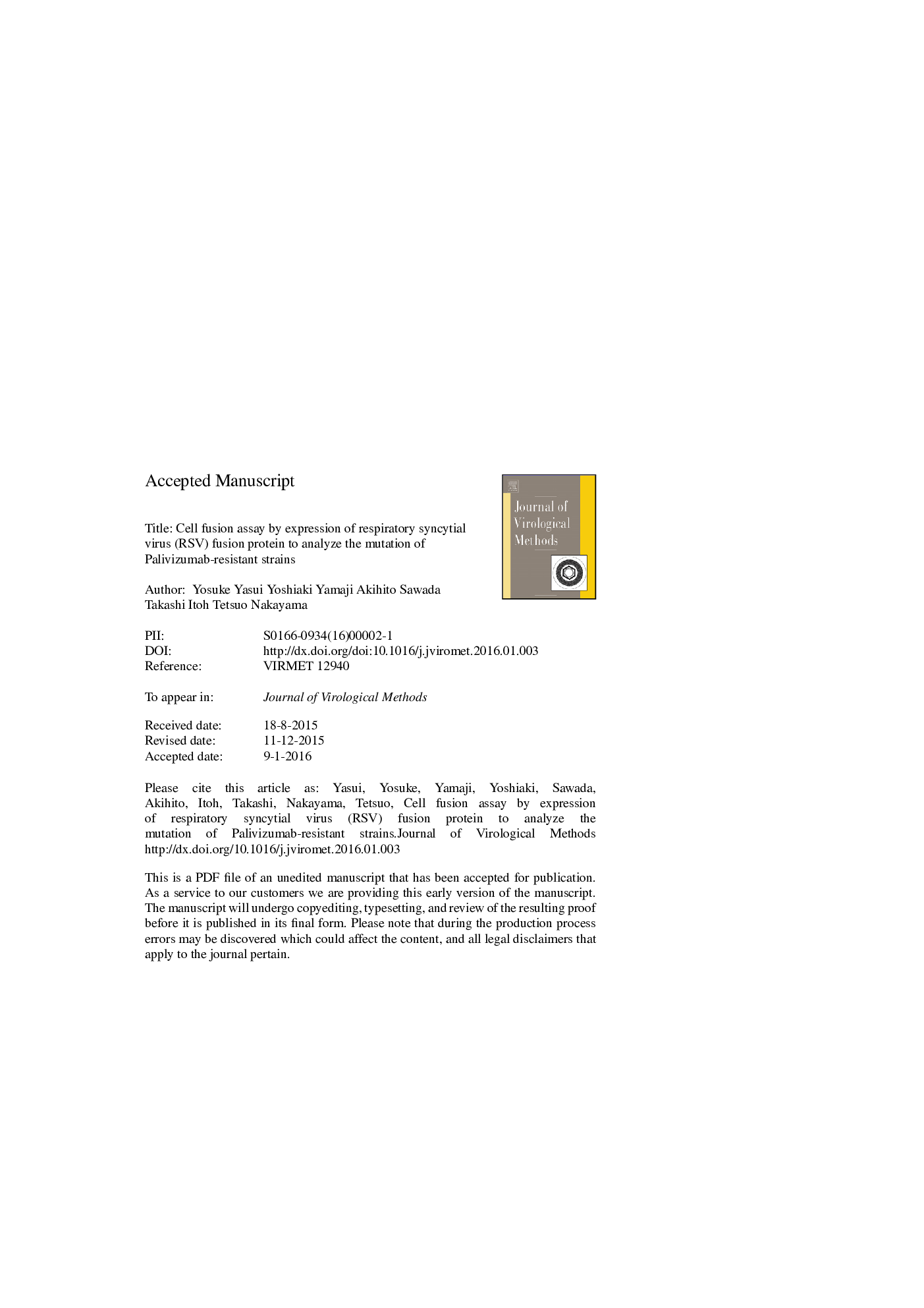| Article ID | Journal | Published Year | Pages | File Type |
|---|---|---|---|---|
| 6132939 | Journal of Virological Methods | 2016 | 27 Pages |
Abstract
Respiratory syncytial virus (RSV) consists of fusion (F), glyco (G), and small hydrophobic (SH) proteins as envelope proteins, and infects through cell fusion. F protein is expressed on the surface of infected cells, and induces cell fusion. In the present report, expression plasmids of the F, G and SH proteins were constructed and cell fusion activity was investigated under T7 RNA polymerase. F protein alone induced cell fusion at a lower concentration than previously reported, and co-expression of F and SH proteins induced cell fusion more efficiently than F protein alone. Palivizumab is the only prophylactic agent against RSV infection. Palivizumab-resistant strains having mutations of the F protein of K272E and S275F were reported. These mutations were introduced into an F-expression plasmid, and exhibited no inhibition of cell fusion with palivizumab. Among the RSV F protein mutants, N276S has been reported to have partial resistance against palivizumab, but the F expression plasmid with the N276S mutation showed a reduction in cell fusion in the presence of palivizumab, showing no resistance to palivizumab. The present expression system was useful for investigating the mechanisms of RSV cell fusion.
Related Topics
Life Sciences
Immunology and Microbiology
Virology
Authors
Yosuke Yasui, Yoshiaki Yamaji, Akihito Sawada, Takashi Ito, Tetsuo Nakayama,
